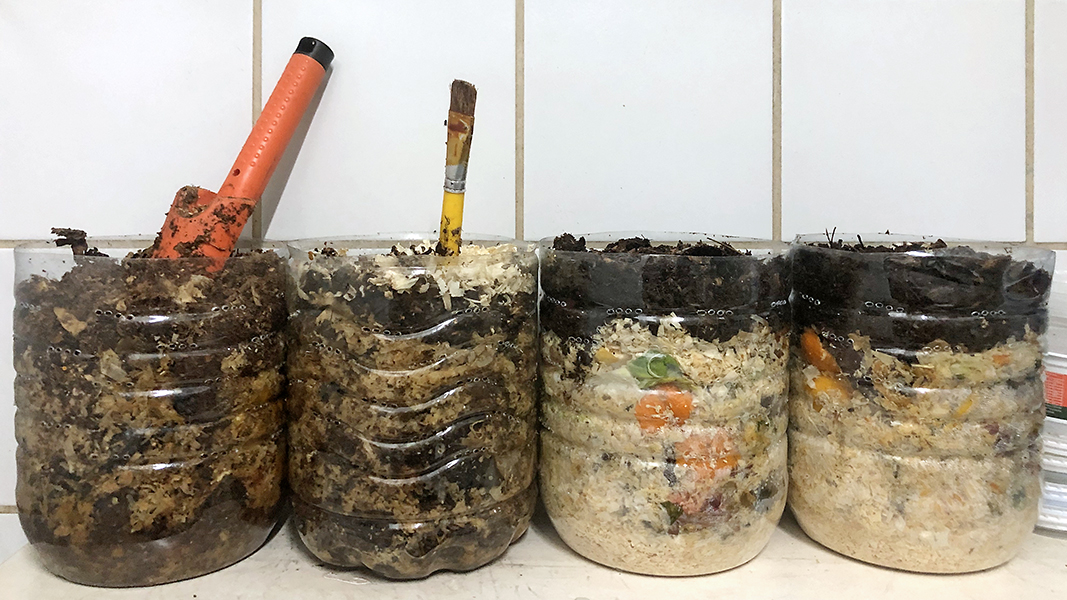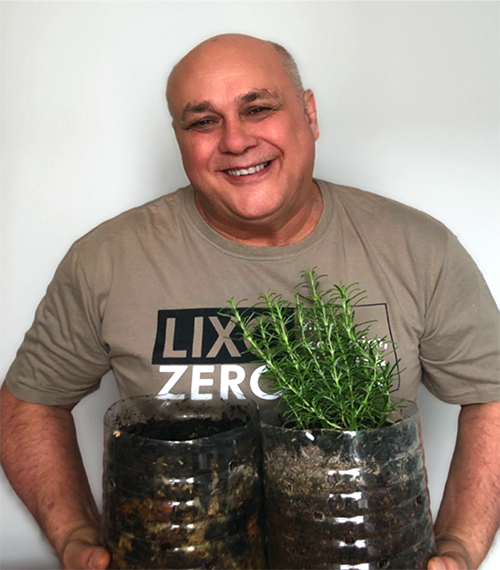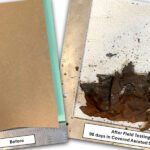Ana Carvalho
Zero Waste Brazil — Instituto Lixo Zero Brazil (ILZ) — is a nonprofit environmental organization that works on waste management strategies with residents, nonprofits, businesses, educational institutions and government officials all over Brazil. It educates and assists with legislation and community actions, proper materials diversion, environmental justice, and the economic benefits of eliminating waste.
ILZ’s most recent outreach is focused on residential food waste diversion, implementing a unique and very efficient residential composting method based on the Lages Composting System (LCS). “I was impressed with LCS’s simplicity and effectiveness,” notes Rodrigo Sabatini, ILZ’s president. “It can effectively educate all sectors of the Brazilian population to efficiently divert most of its organic waste, which comprises approximately 50% of the country’s total waste.”
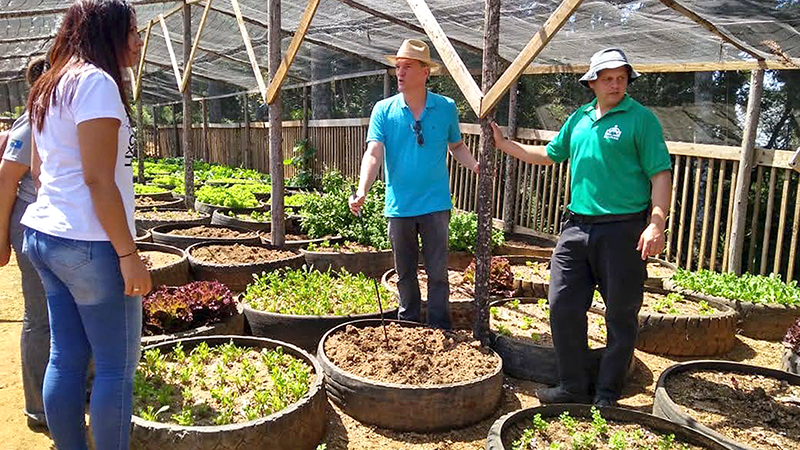
Germano Güttler (in blue shirt), professor at the Santa Catarina State University in the City of Lages, Brazil, at the Lages Male Penitentiary compost garden. The program has been diverting nearly 200 lbs/day of food waste.
LCS was created by Brazilian agronomist, Professor Germano Güttler, PhD in Soil Science at Santa Catarina State University in Lages, Brazil. It is a very simple, user friendly and effective “forest-oriented” method to compost household organic waste, including meat, fish, poultry, dairy products, egg shells, bones, cartons, cardboard, papers, pet feces, and cat litter. Güttler observed that most community and school gardens and home composting projects don’t succeed due to the difficulty with retaining volunteers to maintain them. “At first, they think it is fun, but the novelty wears off and the project gets abandoned,” explains Güttler.
LCS is based on the natural composting process that occurs in forests. It doesn’t require any special land preparation and can be done directly over dirt or grass or on a slab. When the surface is nonpermeable, Güttler suggests that composting take place under a covered area for the first 30 days, and only moved to an open space for curing. Other options are to have holes about 5 inches from the bottom of the pile to contain the leachate and retain the moisture, put a piece of thick carpet or other fabric on the slab to absorb moisture, or create a drainage system to direct the leachate to an area where it can be filtered, e.g., to a dirt or grassy area.
The organic waste is placed in a pile that should reach a maximum height between 20 cm to 30 cm (8- to 12-inches) when completed, and covered with the easiest carbon source available, such as dry leaves, small wood sticks, sawdust, wood shavings or paper. Being a tropical country, where native vegetation is abundant, carbon sources are readily available, including at residential dwellings.
The next step is to aerate the pile during the first two weeks. This is easily done by using any pointed object, such as a stick, to punch holes in the pile. There is no need to mix the organic residue with soil, or rotate the pile. “This is a one-step composting system,” notes Güttler. “It eliminates the need to take the organic residue to a composting facility and then transport the final product to a vegetable or flower garden, decreasing the carbon footprint associated with the process.” The method has been successfully implemented in schools, correctional facilities and residential dwellings. It takes a little over two weeks for the organic waste to be transformed into a dark, rich organic matter. After that, he suggests waiting another two weeks to start planting.
LCS recommends growing flowers, and not edible food, when the compost has been derived from a feedstock mix that included pet feces and/or cat litter. It is worth noting a City of Lages experiment that compared flower plantings in compost that included pet feces and cat litter, with plantings in compost that didn’t use those feedstocks. The results yielded faster growth, taller plants, and thicker density in the flower beds with the compost that included pet feces and cat litter.
Bringing The Practice To High-Rises
Sabatini, who also founded Zero Waste Youth Brazil (ZWYB), recruited ZWYB to research variations of the LCS for residential use, including in high-rise building units. The group was also responsible for the promotion, education outreach, and implementation of the system for the residents. Different types of compost containers were evaluated for indoor use in a variety of residential scenarios — including single-family homes, apartments, condos, townhomes and shanty towns — to determine the best system and approach. ZWYB determined that a 5-liter (1.3 gal) PET water bottle was an ideal option. The container selection was based on these 5 factors: Easy availability; low cost; transparent material — a must for the educational goal of clear visualization of the composting process; reusability; and aesthetic appearance to blend with different decorative styles.
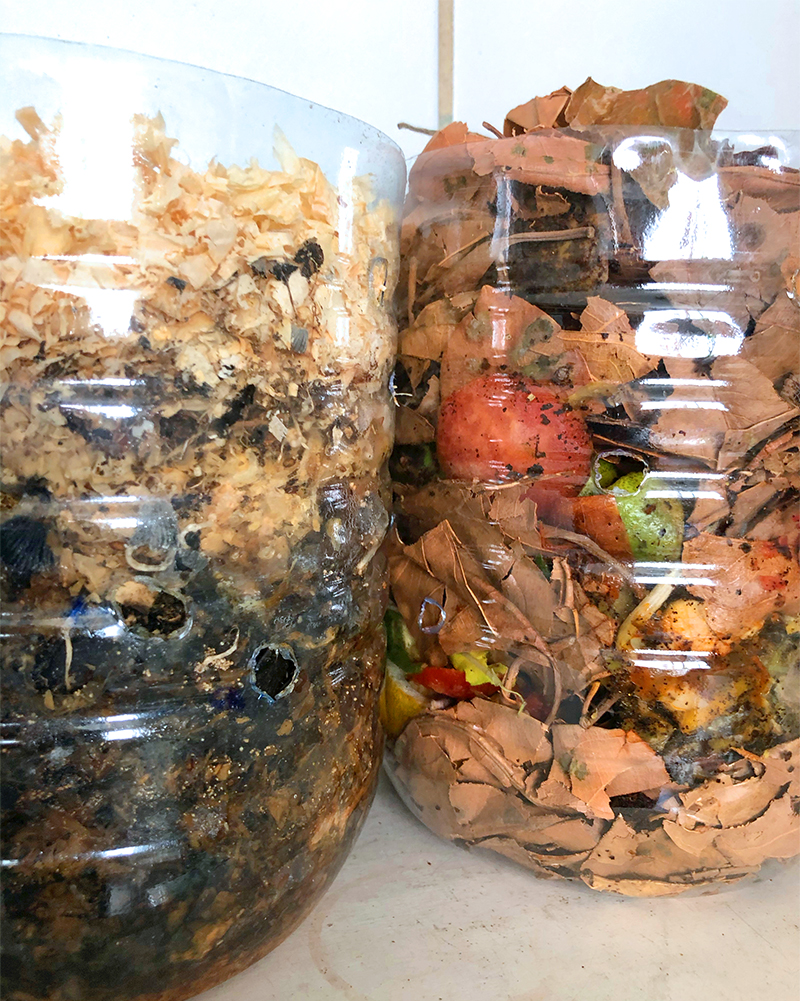
Zero Waste Youth Brazil’s residential composting containers, created out of PET water bottles, have small holes on the sides. Layers of organic material are covered with carbon sources.
The container choice also considered opportunities to work with the organization’s mission of environmental justice by improving local waste pickers’ profits. Recycling in Brazil is largely done by random individuals, also known as waste pickers, some associated with a cooperative, who collect recyclables from trash containers throughout the cities, and sell the material at recycling processing centers. Recycling centers pay roughly R$0,08 for each 5-liter PET container (less than $0.01 based on currency exchange rate of October 2020). ILZ pays R$1,00 per container (approximately $0.17), significantly improving the waste pickers’ revenue from the collection of the material.
To start, the container top is cut off and several 1 cm holes (4/10 of an inch) are cut into the sides for proper aeration. It is recommended to place a small layer of compost on the bottom and start filling the container with layers of organic waste covered by a layer of carbon. This process is to be repeated until the container is almost filled. Then users top it off with a thicker layer of carbon material or finished compost. That last layer acts as an odor filter and a barrier to vectors. During the first two weeks, the mix needs to be aerated. This process is simply done by poking holes in it with any pointed object.
How to make the compost container
To help with implementation and promotion of the program, ZWYB provides about 500 grams ( approximately 1 lb) of finished compost with the containers they offer to first-time users at each high-rise building or shanty town. The container’s first layer also can be a dry carbon source, like dry leaves or sawdust .
ZWYB research concluded that it takes approximately 8 containers per month to compost the food waste from a family of four (2 containers per week). The first two containers used are ready in 30 days to harvest the compost or grow food or flowers. ZWYB’s experiments also determined that 36 containers can fit in one square meter (3 square feet), which is very feasible for even the smallest residential units.
When starting a new program, e.g., at a new building, ILZ purchases the containers and ZWYB retrofits them into composting vases by cutting off their tops. ZWYB created person-to-person training, an on-line video, and an e-book with instructions on how to make the composting containers and compost the residential organics. It conducted a massive social media promotion of the program, and the idea exploded throughout the country. According to Sabatini, as of October 2020, more than 500,000 people have watched the educational training sessions on social media (sampling of social media posts). He estimates that millions of people have learned about it and started, or are starting, the program at their homes.
It currently is very popular in 3 major Brazilian metropolitan areas — Rio de Janeiro, Florianopolis and Fortaleza. ZWYB works with homeowners’ associations and individual residents, assisting in program implementation. Residents are planting spices, and using the compost on their indoor plants, or donating it to be used on the building landscape.
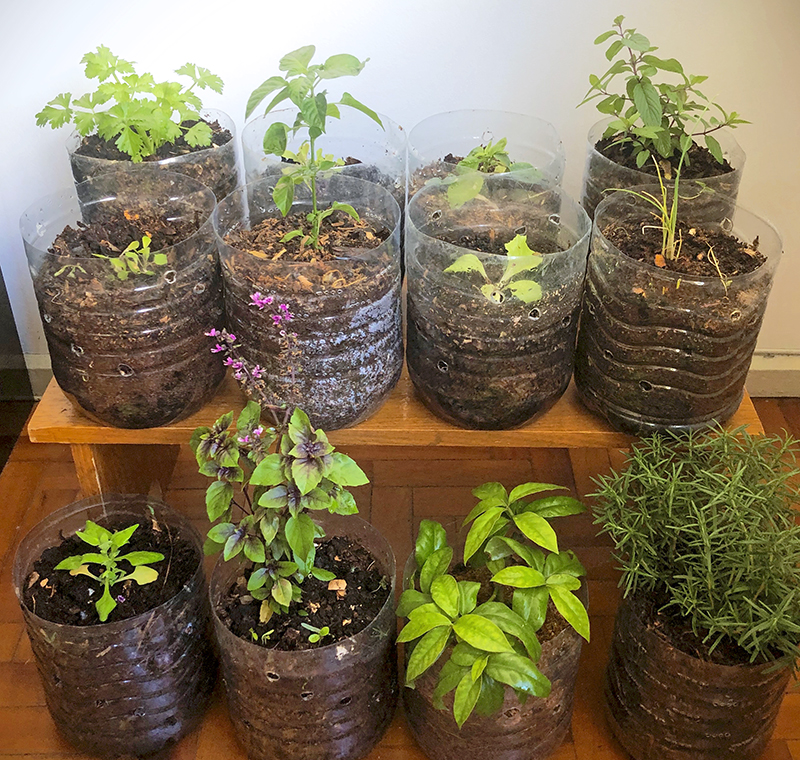
Composting containers are used to grow plants — and are a decorative feature inside a high-rise unit.
ZWYB contacted community leaders in several low-income neighborhoods to start the program for their communities. It provided the first 100 composting containers and the necessary education and outreach for each neighborhood, teaching how to properly divert organic waste at home, and also how to plant healthy food for families, including spices, vegetables and fruits. The leaders then train other community members to expand the program throughout the community. Besides assisting with organics diversion, the program has been helping these food desert communities have access to healthy food at no cost to them. Since 36 containers can be placed in 3 sq. ft., each residential parcel can grow a substantial amount of healthy food for regular consumption.
LCS At Schools And Correctional Facilities
In addition to this booming residential implementation, the LCS method has been effectively used for over 8 years by the City of Lages’ School District and for over a year by the Lages Male Penitentiary (LMP) correctional institution. At these sites, the piles were built directly on the soil, without the need to prepare the area for composting.
Over 70 schools currently use the system, diverting close to 400 tons/year of food waste separated by cafeteria staff and students. Food waste is collected in well-marked containers, and brought to be composted in the schools’ vegetable gardens. Schools plant and harvest several spices, lettuce, arugula, tomatoes, squash, and watermelon, which also are utilized in the students’ meals. In addition, some of the harvest is sent home with low-income students to assist with healthier nutrition at home.
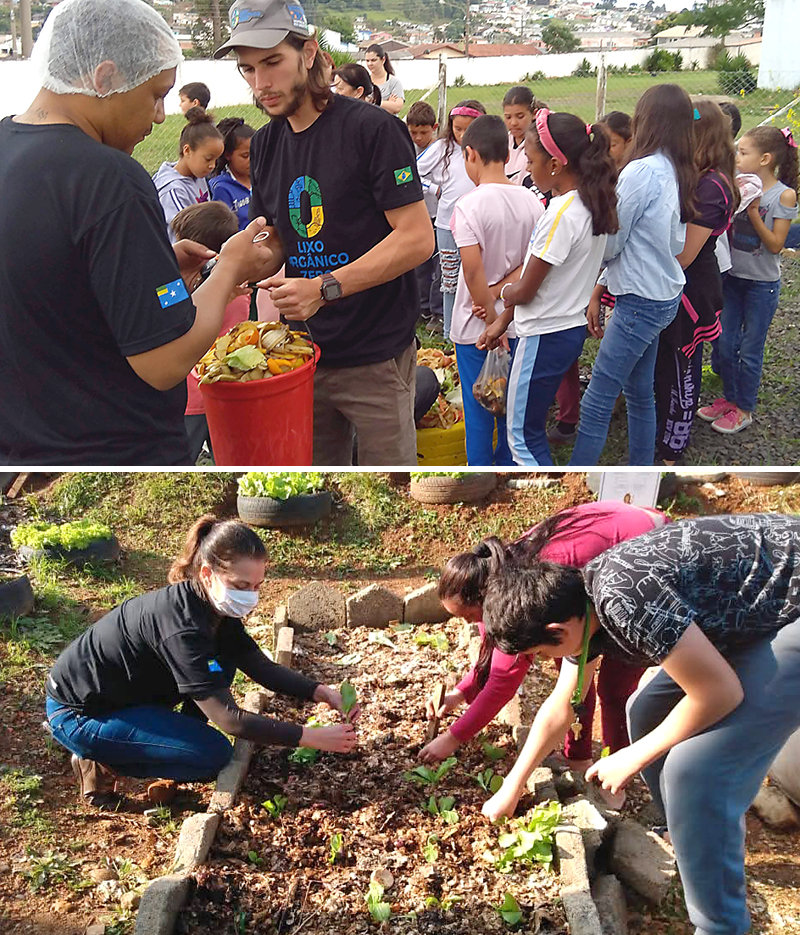
Students, school and kitchen staff at Lage’s Tozzo Municipal School collect kitchen food waste in 5 gal buckets (top). Material is taken to the school garden where it is spread over a patch in piles no higher than 12 inches, and immediately covered with a carbon source. Students start planting their vegetables after 30 days of composting (above).
With a little over a year of implementation at LMP, which houses 600 inmates and serves 1,500 meals a day, the program has been diverting nearly 100 kgs/day (200 lbs) of food waste. “Due to the cost of healthy food, prior to the compost garden, there were less healthier food options available for the inmates,” says LMP’s dietitian, Tatiane Strade. “The compost garden grows several spices and vegetables like tomatoes, beets, bell peppers, lettuce, arugula, green onion, mint, and cilantro, that are been utilized in the inmate meals.” In addition, the program teaches new job skills to inmates who work in the community garden.
ILZ’s residential organic waste system is diverting the recyclable containers and organics from the waste stream, improving waste pickers’ revenues, teaching job skills to inmates, and providing healthy food. The composting container adapted from the 5-liter PET water bottle is functional and meets the aesthetic and space needs of various residential units, from high-rise condos to underprivileged communities. This system has the significant benefit of enabling residents, especially those living in food deserts, to grow no cost healthy food to supplement their dietary needs.
Ana Carvalho, MS, Environmental Specialist, is a Contributing Editor to BioCycle. Photos for this article were provided by Prof. Germano Güttler and Rodrigo Sabatini.


